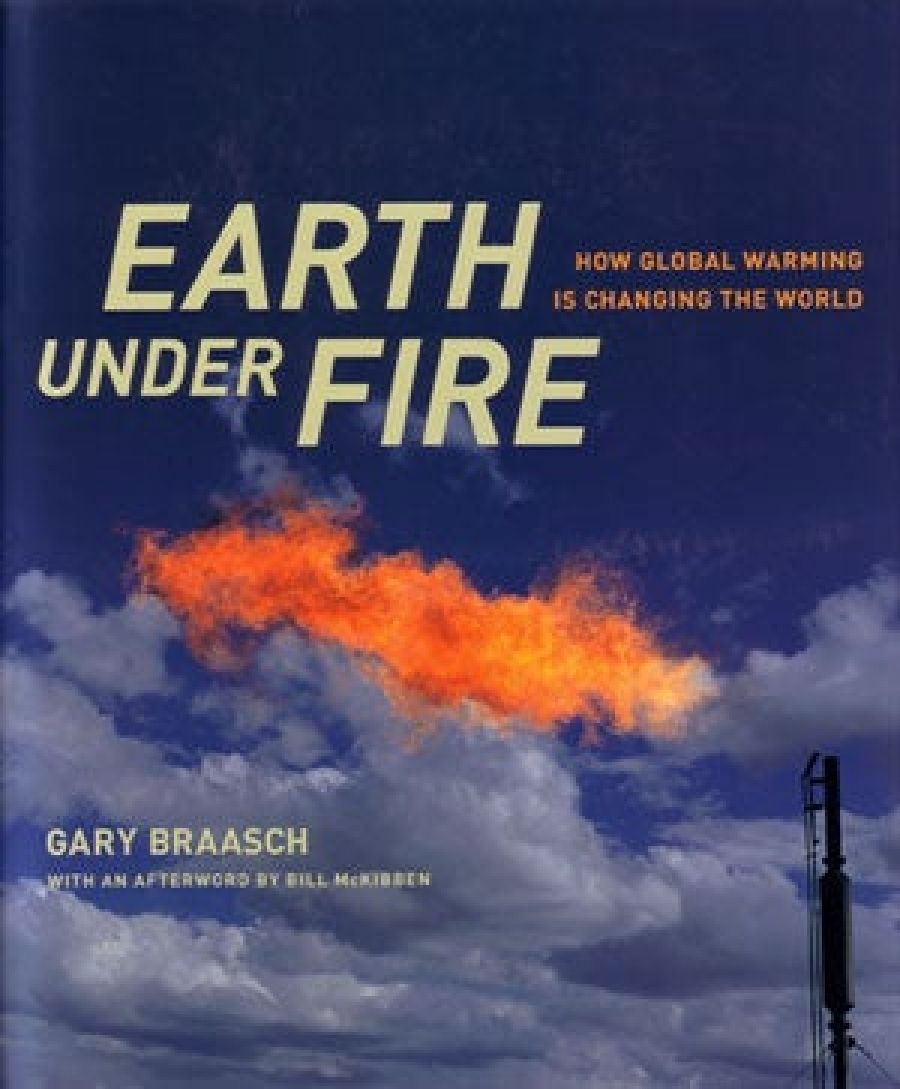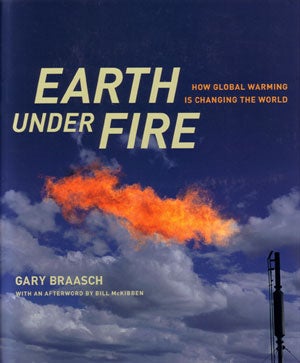
- Free Article: No
- Contents Category: Climate Change
- Review Article: Yes
- Article Title: 'The land that is melting'
- Online Only: No
- Custom Highlight Text:
In 1994, I stood at the foot of the mighty Athabasca Glacier in the heart of the Canadian Rocky Mountains. At places more than 300 metres thick, the ice was treacherous, riven by great fissures and studded with rocky debris carried down from the Columbia Icefield, seven kilometres away. We had parked our car outside the chalet, a kilometre or so behind us, and traversed the moraine stretching across the treeless valley. As I waited for a break in the clouds before taking a photograph, it was disconcerting to consider that, one hundred years earlier, my vantage point would have been compressed under tons of slowly flowing glacial ice. Indeed, the glacier then extended beyond the site of the current Chalet carpark. This was my first direct experience of global warming. With such compelling evidence of climate change, it is not surprising that award-winning photo-journalist and environmentalist Gary Braasch begins his book on global warming with matched images of the Athabasca Glacier taken in 1917 by A.O. Wheeler, and in 2005 by Braasch himself.
- Book 1 Title: Earth Under Fire
- Book 1 Subtitle: How Global Warming is Changing the World
- Book 1 Biblio: University of California Press $64.95 hb, 290 pp
- Book 1 Cover Small (400 x 600):

- Book 1 Cover (800 x 1200):

Earth Under Fire: How global warming Is changing the world is the result of a largely self-funded project that Braasch began in 1999 to record the effects of rapid climate change on environments around the world. As a journalist, he ‘wanted to move beyond the raw statistics, the secondhand and political arguments, and talk directly to the scientists who are documenting the change’. More than that, his project also aimed to examine firsthand the consequences that climate change already has wrought on flora, fauna and human populations in affected areas.
This is a handsome volume, skilfully laid out to highlight the author’s outstanding photography. However, it is much more than a collection of stunning landscapes, cityscapes and portraits of their inhabitants. Many unusual design features in the book combine to present Braasch’s message in the strongest possible way. Before the dedication and title pages, Braasch introduces his work with a photo-essay of ten double-page spreads, each accompanied by minimal text, such as you might see in National Geographic magazine: there is that pair of images of the Athabasca Glacier, melting ice-sheets in Antarctica, a polar bear looking desolate and hungry on dry land, a group of Bangladeshis huddled around the remains of their flood-ravaged home, Californian oil refineries silhouetted through an industrial haze, a wind-farm in a sun-drenched Illinois field. The fact that such images are familiar and run the risk of being branded as stereotypical should not undermine the reality of the situations they portray. Braasch seems to be aware of this, and each of his images is tagged with the month and year in which they were taken. With this simple device, he ensures that his book will retain some historical validity for future readers.
A key feature of the book is the level of documentation Braasch provides to back up his case. Every piece of information (and there is a lot of it) is supported by full citations to the relevant scientific literature. A typical endnote may contain five or more individual references. In general, these are not articles in some small local natural history magazine or an ephemeral website, but full peer-reviewed papers in the world’s leading scientific journals, such as Nature and Science. When information is sourced back to newspaper articles or websites, the citations are complete, including dates of publication or full URLs, respectively. An appendix provides an extensive list of publications, government reports and organisations that are involved with various aspects of monitoring and responding to climate change.
With such heavy reliance on validated scientific data, the text could become bogged down in technical details and terminology that might confound the non-expert reader. There really is a vast amount of numeric information here, but the load on the reader is lightened by three useful strategies. First, there are side essays by Braasch to explain key concepts underlying scientific terminology or critical features of the international treaty protocols, for example. Second, there are short, well-honed essays that present the views of some of the world’s leading climate-change experts. Finally, and perhaps most refreshingly, Braasch exercises his journalistic skills to provide us with impressions of life in a changing climate, as experienced through his own travels. Sometimes he interviews the scientists; other times he interviews locals affected in often surprising ways by changes in temperature, rainfall, tidal patterns or animal migration paths. Braasch writes fluently, and these interludes add value to the book.
In the lead-up to the 2007 federal election, issues relating to climate change were rarely out of the news. Along the way, ‘climate-change sceptics’ managed to metamorphose into ‘climate-change realists’. Yet, in some quarters, claims continue to be made suggesting that the jury is still out on climate change, that scientists cannot agree about climate change, that the effects of climate change have been exaggerated. Braasch provides one example after another from diverse environments around the world to support the case that claims such as these are simply wrong. All the data point unambiguously to the conclusion that the earth is going though a period of warming at an accelerating rate unprecedented in either the historical or geological records. The great majority of climate scientists, from biologists to meteorologists, agree that the by-products of human activity, most notably carbon dioxide, have the most significant deleterious impact on the rate of warming.
Predictions for the future tend to diverge, not because there is anything particularly wrong with the underlying data, but because predicting the exact consequences of climate change on a global scale, taking into account all the relevant local variation, is so overwhelmingly complex. Nevertheless, as Braasch repeatedly illustrates with his case reports, the futures of individual ecosytems and the people that depend on them often are easier to predict. For example, if sea levels rise according to the best super-computer models, and tropical storms continue to intensify at their current rate, a Pacific island nation such as Tuvalu, most of which lies less than one metre above current sea level, will become inundated. It will cease to exist.
Whilst Braasch presents a depressingly convincing case that climate change is real, this book is not a shrill manifesto. It is impeccably researched and Braasch quotes alternative viewpoints when there is appreciable uncertainty on the validity or interpretation of the data. However, in the end, this must be a political work. His final chapter, ‘Choosing a Safer, Cleaner, and Cooler World’, outlines an increasingly accepted agenda for reducing global energy consumption, especially by the residents of resource-hungry developed nations such as our own. As Braasch admits in the closing lines of his acknowledgments, despite his best efforts to reduce his energy footprint, ‘being an American means I use a lot of energy to support myself and my community’. When Inuit Park Ranger Elooangat ruefully observes the ever-receding glaciers in his traditional Arctic environment, and refers to it as ‘the land that is melting’, we have no choice but to agree.

Comments powered by CComment